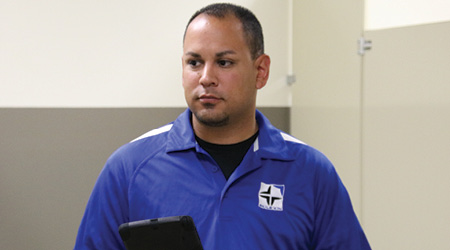
Controlling interactions between upper management and a custodial staff is vital for operations to run smoothly. If that communication is disorganized and poorly documented, staff members could become more reactive than proactive when it comes to handling problems.
Some companies keep track of communication by writing things down in hard copy. Then they might use fax machines, email and smart phones to send that information on to the right people and stay up-to-date with building maintenance.
This technique works, but it isn’t the best process. There are better ways to simplify communication record keeping.
At least that’s what Skils’kin, a non-profit agency in Spokane, Washington, discovered. Skils’kin offers a variety of services to adults with disabilities, including custodial work, and employs about 60 cleaning workers at a time.
Back in 2011, Skils’kin wanted to do more to improve their quality control program. They realized that efficient and innovative technology would be required to do just that. In 2012, they implemented cleaning software from CleanTelligent.
“Information gathering and quality measurement has become easier,” says Michelle Nagy, a quality assurance specialist at Skils’kin. “Communication and corrective action is faster. Preventative action and catching things before they become a bigger issue make you more effective in the long term.”
Skils’kin management also observed how the software saves them many hours from having to go back and correct issues that had been consistently missed before. They are able to quickly respond to negative inspection results and fix them.
In one circumstance, CleanTelligent revealed a regularly occurring cleaning deficiency, and management was able to orchestrate a specific plan to eliminate the problem. They knew what they needed to communicate to their employees.
“We were able to respond with some additional training for some newer staff members. And we provided oversight in that area of performance,” says Nagy.
The issue never came up again.
“Getting information right up front is a big benefit,” she says. “You don’t have to wait for the communication; you don’t have to wait for somebody to have time to get the information to you.”
While cleaning employees are out on the job, they use iPads to send instant alerts to management.
Nagy mentioned other ways that enhanced communication has improved operations for Skils’kin because of CleanTelligent:
• Employee accountability: “The software keeps the mindset of the workforce on the fact that we’ll be inspecting them. They know up front that they better do a good job and they do. There’s been more of a focus on that, so you don’t experience issues that you would normally find.”
• Improved sense of direction: “We get to adjust internally before anything becomes a problem externally. We can see what we need to focus on.”
Nagy pointed out that CleanTelligent ultimately gives Skils’kin management peace of mind because they know their staff is doing a good job. Employees are able to share how they are doing and know where and how to make improvements.

 The Down and Dirty on Cleaning in Virus Season
The Down and Dirty on Cleaning in Virus Season How Surfactant Use is Expanding in Commercial Cleaning
How Surfactant Use is Expanding in Commercial Cleaning Maximize Your Margins: Learn How to Automate Pricing and Track Rebates
Maximize Your Margins: Learn How to Automate Pricing and Track Rebates